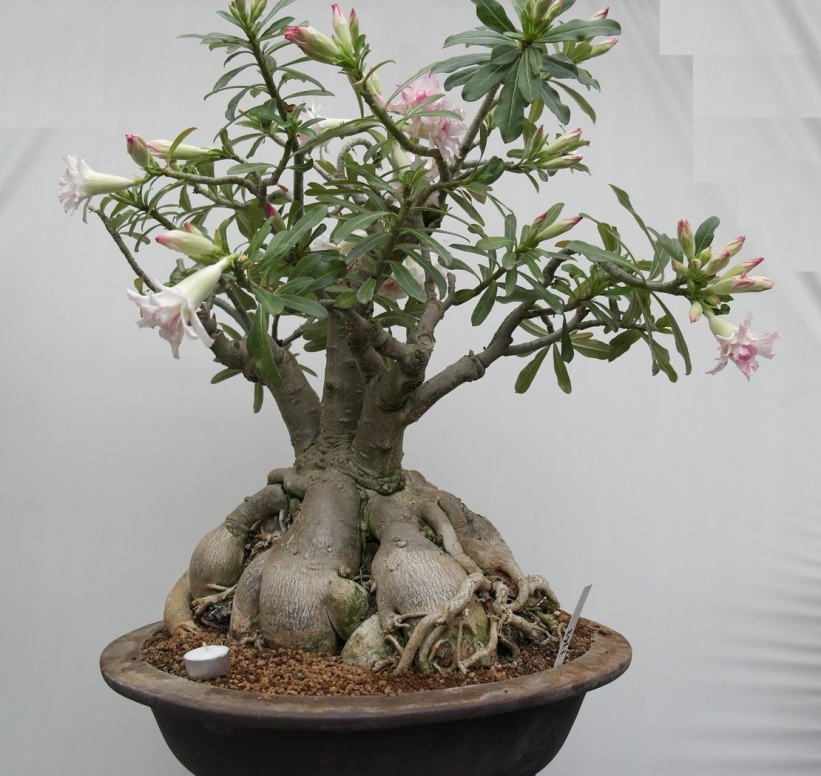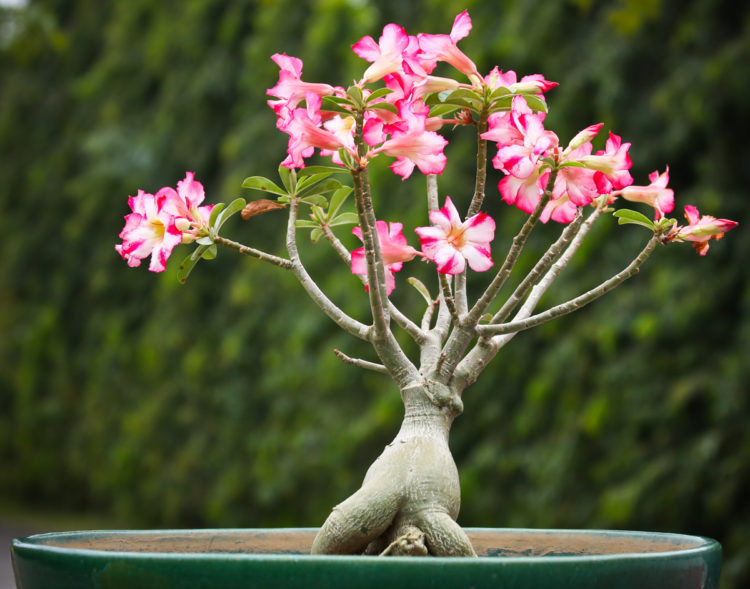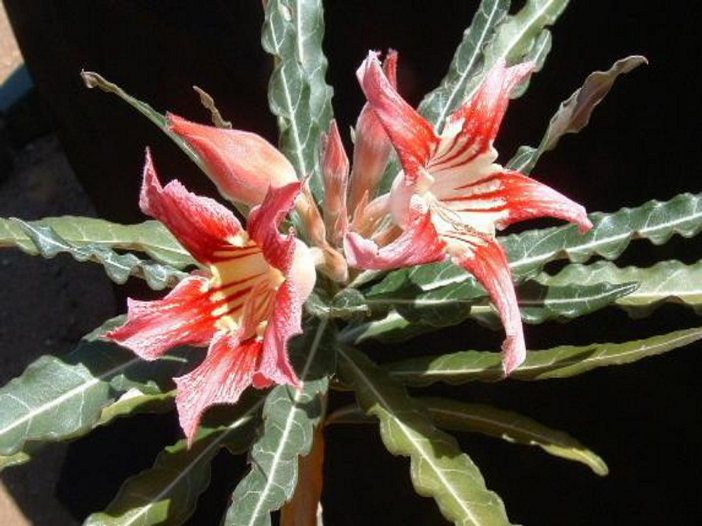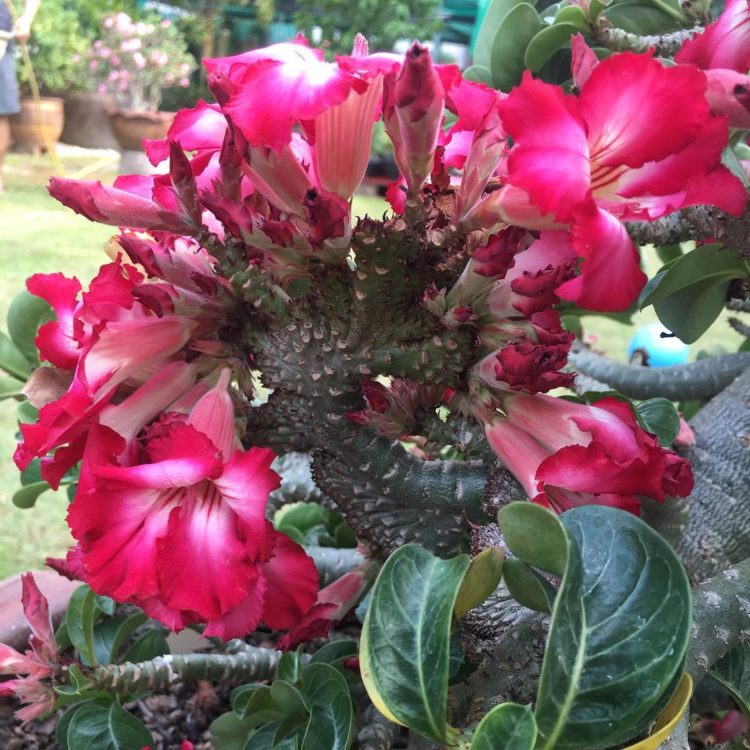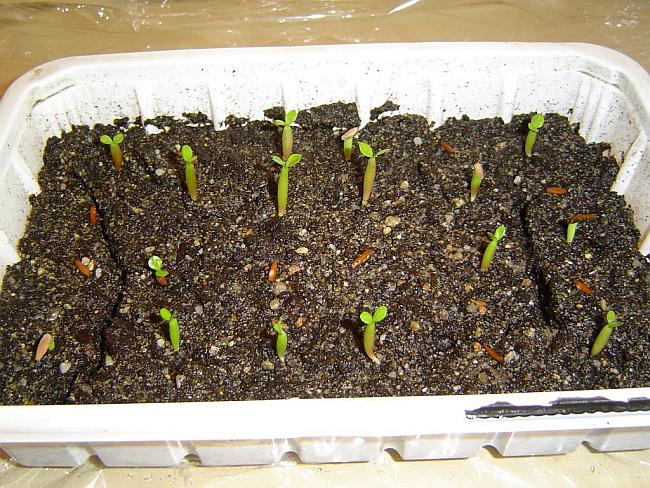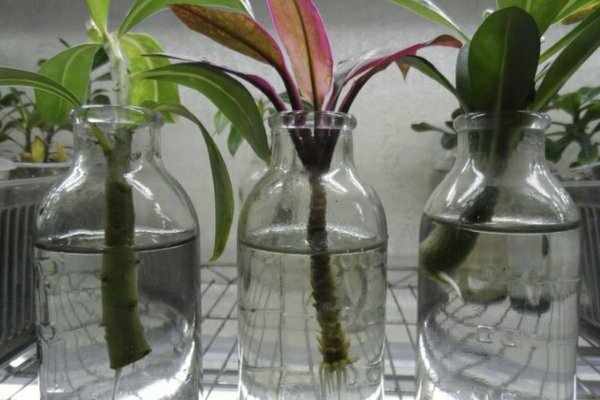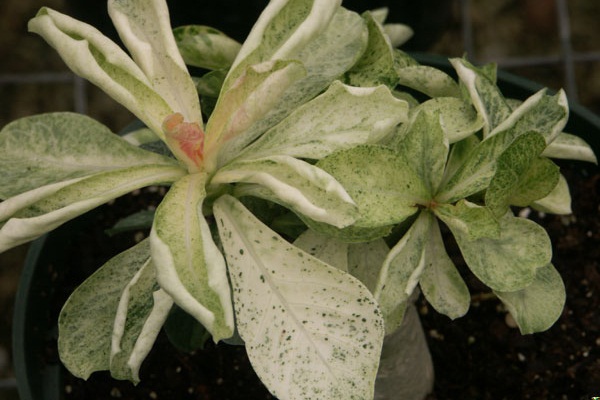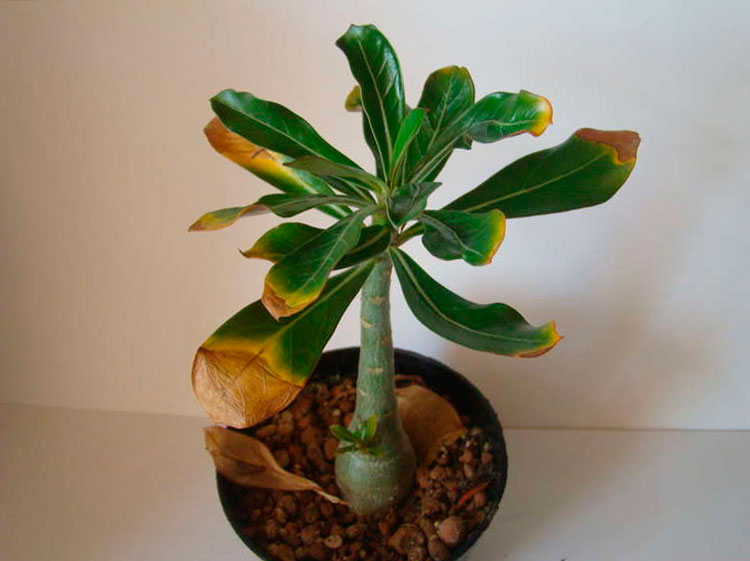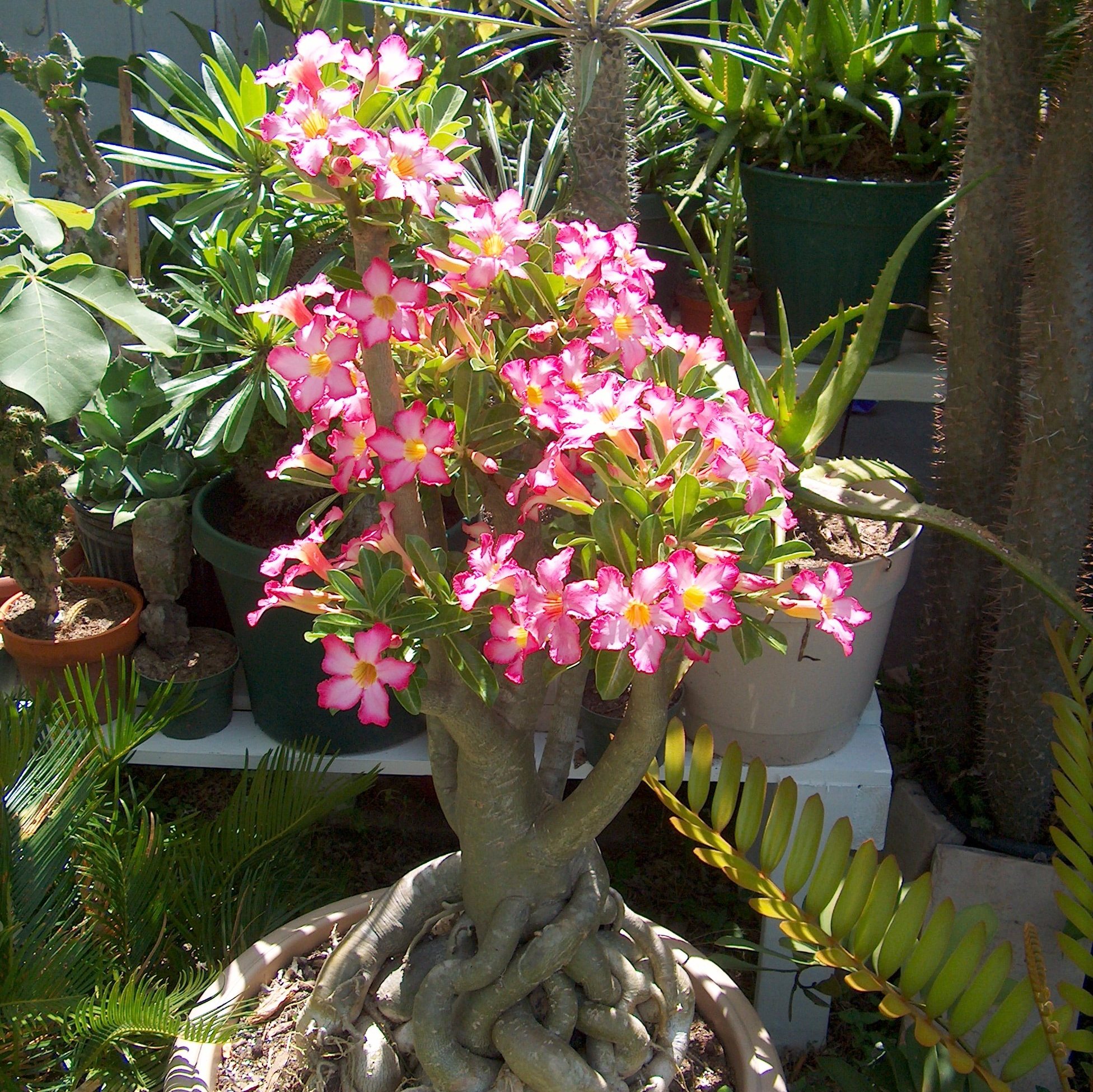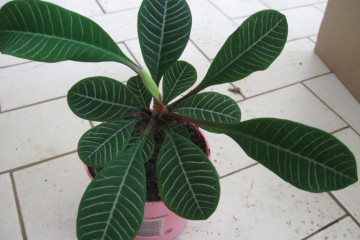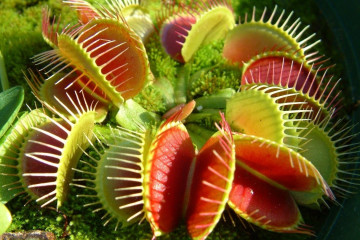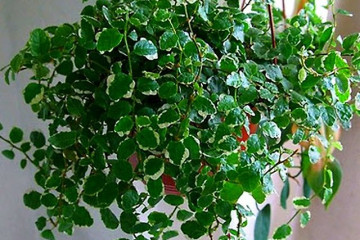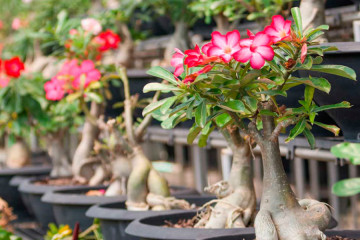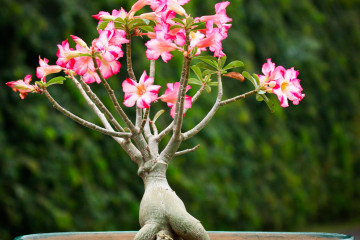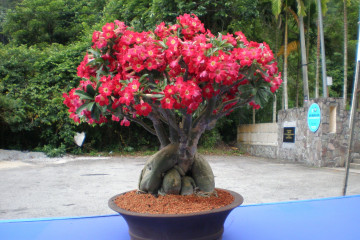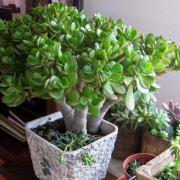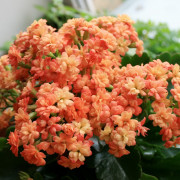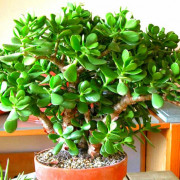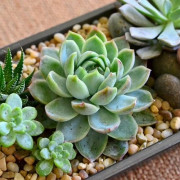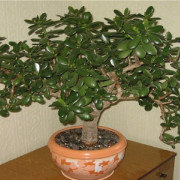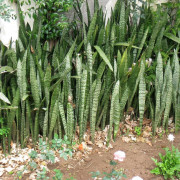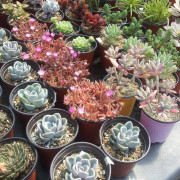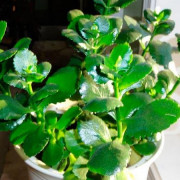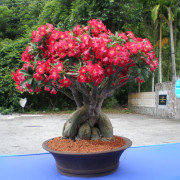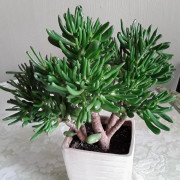Adenium Obesum - description and care of the house
Content:
This is an exquisite and extraordinary representative of the succulent family. Adenium Obesum comes from the driest places on the planet, has the Latin name Adenium Obesum. Its usual climatic conditions are warm winters, minimal rainfall and a lot of sun.
What does adenium Obesum look like, which family does it belong to
Outwardly, the plant is a tree or shrub with a dense and fleshy trunk. The flower grows extremely slowly and in nature can reach no more than 2 meters in height, and at home - no more than 1 meter. Adenium obese, or Obesum, belongs to the Kutrovye family, the Shrub genus.
The stem of the shrub is gray or brown. The base is more widened than the apex. Adenium in nature can reach 1 meter in diameter. The shape of the trunk directly depends on the conditions of growth and care. The leaf plates are dense and resemble pieces of skin to the touch. Their size varies from 5 to 15 cm. Inflorescences on adenium appear only in summer. The flowers are composed of petals, which can range in color from red to white.
Common varieties
For many years, the plant has been an exquisite and welcome guest in any home. A variety of varieties allows you to choose the right kind. This type of succulent plant has a lot of beautiful additional names: adenium desert rose, impala lily, mini adenium.
The variety Adenium Arabicum has a thick caudex that is almost black in color. This type includes the White Elephant adenium. The leaves of the species are decorated with white spots and have a leathery texture.
Adenium Crispum is one of the most prominent representatives of the Somali subspecies. The thick caudex of the plant is underground and looks like a common turnip. Wavy narrow leaves are decorated with white veins. Due to its extremely slow growth, it is often grown in apartments.
Adenium white got its name from its beautiful inflorescences. It also has the name terry adenium. It is extremely rare to find flowers of pink shades.
An unusual representative of the species is Adenium mix. The plant is bred by experienced breeders. Depending on the growing conditions and climatic characteristics, inflorescences can acquire almost any shade.
Amber Cloud adenium is another striking representative of the obese species. Two-colored inflorescences have attracted experienced flower growers around the world for many years.
The world's largest nursery of Taiwanese succulent varieties - Adenium Rose Chen. In Russia, Adenium Sib or Adenium Siberia is considered a recognized and proven Internet resource.
Before choosing a plant, you need to figure out what is the difference between adenium Arabicum and Obesum:
| Characteristic | Adenium Obesum | Adenium Arabicum |
| Place of growth | Territory from Saudi Arabia to Senegal | West Saudi Arabia and Yemen |
| Appearance | A fleshy bottle-shaped trunk, grayish-brown in color with many shoots at the top. | Thick, low caudex, dark brown in color or with a purple or pink tint. |
| Growth rate | Very slow | Average |
| When it blooms for the first time | At 1.5 years | At 3-4 years old |
Briefly about the history of appearance
The plant was first discovered by a European researcher in Aden. Scientists were literally mesmerized by the unusual appearance of the flower. Later, the species was discovered on the Arabian Peninsula, in Central Africa.
Home care for the Obesum adenium flower
Proper care of a succulent plant involves a number of necessary procedures. Maintaining the required temperature and light level are the main components of a healthy and beautiful plant.
Temperature
The optimum temperature regime for this species is + 25 ... +30 degrees in summer and + 10 ... +15 in winter. At lower temperatures in winter, there is a danger of freezing of the root system and its death. On hot days, for comfortable growth, it is best to arrange ventilation of the adenium.
Lighting
The place for the plant should be as illuminated as possible. Under favorable weather conditions in summer, you can expose the flower to fresh air. The plant is perfect for growing in flower greenhouses and conservatories.
At low temperatures, adenium must be placed on the sunniest windowsill. With a short daylight hours, it is advisable to install additional illumination.
Watering
Moisturizing is the same as for a cactus. The earth ball is abundantly moistened and then dried.
It is also impossible to dry the soil excessively, this will lead to a stop in the growth of the tree.
Spraying
The spraying process is allowed only during the growing season. When sprinkling, do not allow moisture to enter the inflorescences.
Humidity
At the time of active growth, it is necessary to create an increased level of humidity in the room where the adenium is growing.
Priming
The optimal substrate for a plant is loose and porous, which will not retain excess moisture. The substrate for adenium should consist of sheet earth, expanded clay, perlite and coconut fiber.
Top dressing
An adult bush has a positive attitude towards almost any fertilizer. The main thing is that nitrogen, potassium and phosphorus are present in the composition in equal proportions.
Features of care in winter, dormant period
The flower has an extremely negative attitude to any low temperatures. In winter, adenium is in a resting phase. The "green mass" falls off and the plant no longer needs moisture.
Growing and caring for the winter includes several mandatory rules:
- The temperature of the house should be at least +10 degrees.
- Watering is carried out only at elevated temperatures and no more than once a month.
- At the first signs of awakening, the tree must be moved to the most lighted place.
- Moistening the soil is allowed only 20-30 days after waking up.
When and how it blooms
Flowers on the plant form from spring to autumn. With optimal conditions, year-round flowering can be achieved.
Types of flowers
The flower pharynx has a lighter shade than the inflorescence itself. Flowers can be painted white, red, pink, black. They are simple or terry.
Flower shapes
The size of flowers, as a rule, does not exceed 7 cm. Inflorescences can have smooth or wavy edges, double or semi-double structure. Most often, the flowers on the adenium are five-petal. Exceptions are extremely rare. In some plants, they can consist of seven petals.
Flowering period
The flowering period may vary for each variety. Some species delight with flowers already in the 2nd year, while others - only in the 4th. Most often, the plant begins to bloom in early spring or autumn. The flowering period under favorable conditions can last from 30 to 45 days.
Changes in care during flowering
During the period of flower formation, in no case should we forget about watering and good illumination. When the first buds appear, it is necessary to slightly increase the watering rate. Abrupt changes in the care of adenium during the flowering period will lead to dropping of buds and, as a result, the absence of flowers on the plant.
Pruning
In the spring, you can prune the plant. The procedure is performed only when absolutely necessary. Most often it is used to form a flower and increase decorativeness. To create a beautiful tree, the side branches are shortened by almost 1/3. Cardinal pruning contributes to the formation of a bushy form of adenium.
How adenium Obesum reproduces
Reproduction of a perennial can be carried out in different ways: by seeds, cuttings, layering or grafting. The description of the process will differ depending on the selected method.
Germinating seeds
Adenium seeds can be purchased at almost any specialty store.
Procedure:
- Before planting, the seed is soaked for 3-4 hours in warm water. To speed up the process, a growth stimulant can be added to the solution.
- Germinate the seed in a pre-prepared substrate. To do this, mix in equal parts: vermiculite, river sand, charcoal.
- Sowing is performed superficially.
- Containers with plantings are placed in greenhouse conditions and covered with any transparent material.
For germination, the temperature must be at least +35 degrees. The first shoots should appear in about 7-10 days.
For young shoots, daylight hours should be at least 12 hours. If necessary, use additional lighting. It is important to maintain the humidity level and regularly ventilate the area.
Rooting cuttings
Cuttings are carried out during the spring or summer.
Step-by-step instructions for grafting:
- Trim cuttings at least 15 cm.
- Treat the seedling with charcoal before planting.
- Mix perlite, expanded clay, sand and peat as a soil.
- To prevent rotting of cuttings, sprinkle sand and coal around the planting.
When rooting, waterlogging should not be allowed. The landing site must be well lit and the temperature must be maintained at least +30 degrees. The rooting process takes place within 30-45 days.
Air layering
This method can be used for a very short period of time - in late spring and early summer.
Procedure:
- For reproduction by layering, a strong and thick twig is chosen.
- A shallow cut in a circle is made on it with a sharp object.
- The wound is treated with any stimulant and wrapped in moss.
For root formation, the cut site must be constantly moistened. When roots appear, the layers can be cut and transplanted to a permanent place.
Other options
Vaccination can be performed not only on adenium, but also on oleander.
Step-by-step instruction:
- Two shallow cuts are made on the mother plant.
- A kidney or seed is inserted into them.
- The grafted material must be carefully secured and the incisions connected together.
- For a positive result, it is important to maintain an elevated air temperature and a high level of humidity.
If the grafting procedure was performed correctly, the roots will appear in 30-35 days.
Transfer
Adenium is transplanted in the spring. Young specimens need to be transplanted annually. An adult flower only as needed.
The pot should be slightly larger than the root system of the flower. Flat and wide containers are used for succulents. In the absence of a suitable shape, you can use an ordinary flower pot, half filled with expanded clay and only after that with nutritious soil.
Possible growing problems and diseases
Most often, the plant suffers from root rot or viral diseases. In the early stages of the onset of the disease, timely treatment with soapy water will help. For severe damage, use pesticides or fungicides. Some conditions are associated with growing errors.
The plant sheds buds and leaves
With a sharp change in room temperature or strong drafts, adenium sharply drops vegetation. In the fall, this is a natural process before the rest period.
Leaves turn pale
The appearance of white spots on adenium is typical at an increased pH in the soil. Soil alkalization occurs when there is a lack of phosphorus, magnesium, zinc. The introduction of necessary microelements into the soil will help to save the situation.
The tips of the leaves dry
With a lack of magnesium, the edges of the leaves of the succulent die off and bend downward. Usually, visible signs appear already with a critical indicator of a trace element. Urgent watering with liquid fertilizers containing magnesium will help save the plant.
The lower leaves fall
Most often, the shedding of the lower leaves occurs due to a lack of trace elements. With a lack of nitrogen, the leaf plates first turn yellow, and then completely fall off. Timely feeding with the necessary element will save the situation.
Pests
The species is most resistant to the attack of all kinds of insects. It is extremely rare that ticks, worms or scale insects settle on the plant. Regular spraying with regular soapy water will help protect adenium.
Other problems
Failure to comply with the conditions of detention can lead to the following problems:
- Caudex change. Thinning of root processes, and in the future, and cessation of growth occurs due to a sharp drop in temperature, inaccessibility of sunlight and excessive moisture.
- Stopping growth. This also happens due to low temperatures or lack of essential trace elements.
- Flowering problems. The main reason is the lack of light and heat.
In caring for this exotic flower, one should not forget for a second that it is, first of all, a succulent, and has an obligatory rest period. You can get a healthy and beautiful plant only by bringing the conditions of its growth closer to natural ones. Compliance with all the rules of care will allow you to grow this unusual "African rose" even in an ordinary apartment.
